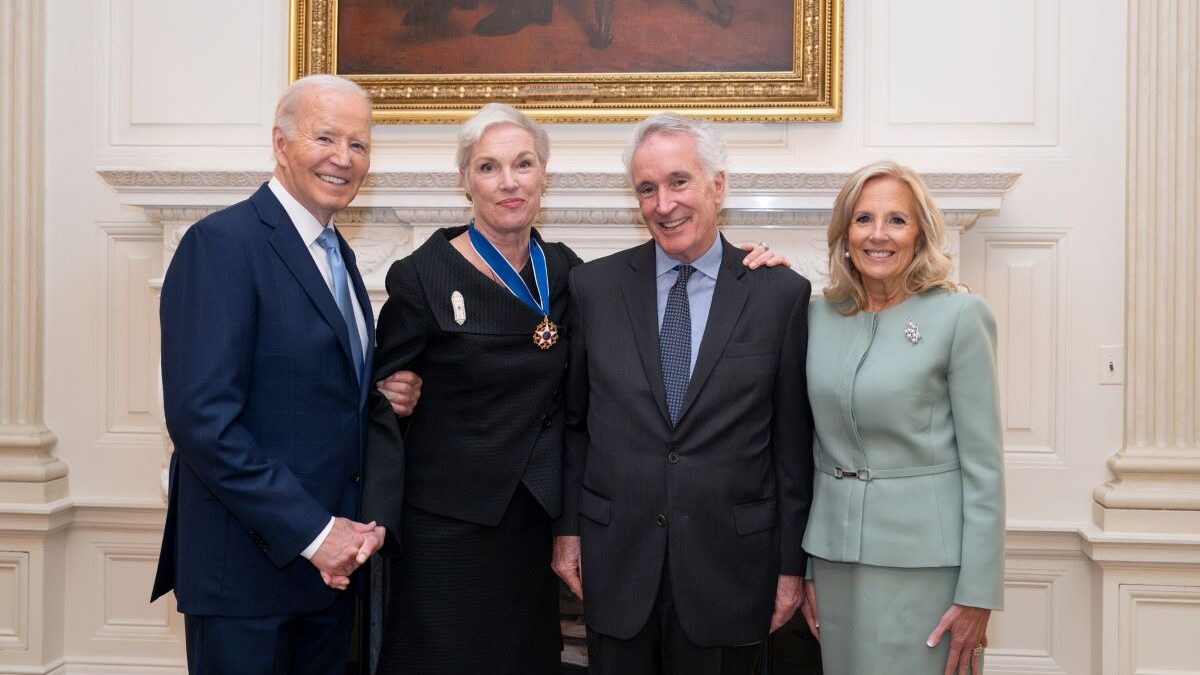We’re winning. In the months since Roe v. Wade was overturned, abortionists are fleeing from state after state as laws protecting life go into effect. As a report from Planned Parenthood’s research group, the Guttmacher Institute, despondently noted, in the first 100 days after Dobbs, “66 clinics across 15 states have been forced to stop offering abortions … there are no providers currently offering abortions in 14 of the 15 states.”
There is more winning to come. Guttmacher estimates that just over half of the states will soon either ban or significantly restrict elective abortion. Tens of thousands of lives will be saved from the violence of abortion every year. Furthermore, the backlash abortion supporters predicted looks more like a ripple than a tsunami. Republicans are still poised to do well in the midterms, and it appears that their biggest problems could come from underperforming candidates instead of increased turnout from pro-abortion voters.
Nonetheless, there have been setbacks amid the success. The defeat of an underfunded and poorly written Kansas ballot measure pushed by the pro-life movement is the most obvious misstep, but there will be more, especially in states where Republican politicians don’t stand up for life. Abortion opponents should learn from these losses and adjust quickly to this new phase in the struggle to protect human life in utero.
Fortunately, pro-lifers have already learned many lessons that just need to be reapplied in new circumstances. Variations on tactics that were used while under the constraints of Roe will be essential to restricting abortion, especially in contested states.
Perhaps the most important lesson is that we should never expect a fair fight. The Kansas ballot measure would have ended the state Supreme Court’s usurpation of abortion policy-making, thereby returning the issue to the people of Kansas and their representatives. But the pro-abortion side spent millions on ads funded by out-of-state donors that were dishonest even by the standards of political advertising, leaving voters with the impression that the measure would ban all abortions, even if the mother’s life were in danger.
Similarly, after Dobbs, abortion advocates launched an extensive fearmongering effort suggesting that restricting abortion would keep doctors from treating ectopic pregnancies. This was a lie. As Alexandra DeSanctis has documented, no state law prevents physicians from treating ectopic pregnancies.
Abortion foes need to realize that this sort of deception will be a permanent part of the debate. Complaining about pro-abortion propaganda is helpful to the extent it educates voters and teaches them to distrust the pro-abortion side and its corporate media allies, but it will not shame pro-abortion activists and media into telling the truth. Pro-lifers need to account for this in our legislative and legal strategies.
We also need to realize that the swing voters on abortion are confused, conflicted, and inconsistent — which is why they are swing voters on the matter. They don’t like abortion, and they are horrified by late-term abortions, but they are opposed to outright bans. In general, they’d rather not have to think much about abortion, and when forced to consider it, they tend to be morally incoherent. Such voters are unreliable and, as we saw in Kansas, easily manipulated by dishonest pro-abortion media campaigns.
Consequently, abortion opponents need to pick their ballot battles carefully, meeting the public where it is at with precise language. Abortion supporters will still lie, of course, but we shouldn’t make it easy for them.
Furthermore, we should recall the tactics that succeeded under Roe when the pro-life movement had to find ways to reduce abortion without being able to ban it. There are still many states in which an abortion ban is not yet politically possible, and a national ban is likewise unlikely anytime soon. Nonetheless, the supply side of the abortion industry can still be restricted even in places where it is generally legal. After all, legal isn’t the same as available.
Even under Roe, elective abortions were not treated as a regular part of the medical industry or of a person’s medical care; abortion isn’t between a woman and her doctor, but between a woman and a stranger she has never seen before and hopes never to see again. This separation of abortionists from the rest of the medical profession means that the abortion supply can be reduced by going after abortion facilities and abortion pill mills. And under Roe, when they could not ban abortion directly, pro-lifers nonetheless became skilled at passing regulations that hindered the abortion industry.
Pro-lifers should thus keep using this approach to constrict the abortion supply in places where it is still allowed. It is not just that wavering voters and politicians will be more likely to support regulation and restriction over outright bans. It is also that the abortion industry and its political allies are notorious for cutting legal and medical corners, which gives the pro-life movement opportunities to hamstring them and even shut them down.
For instance, pro-life governors, and of course, the next pro-life president, can aggressively enforce existing restrictions against an abortion industry that considers itself untouchable. Pro-life legal groups can find ways to sue over the legal and regulatory violations that Democratic administrations routinely commit in their zeal for abortion.
The demise of Roe is allowing pro-lifers to rack up a lot of quick victories. But there are many tough battles ahead before the evil of elective abortion is ended across our nation. To keep winning, pro-lifers need to be humble enough to seek the partial wins that are possible, determined enough to show up and defend life at every opportunity, and smart enough to use the right tools for each job.









